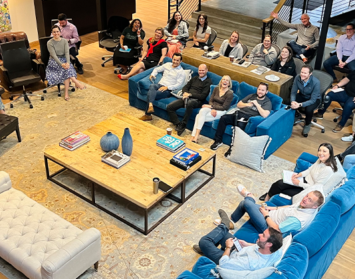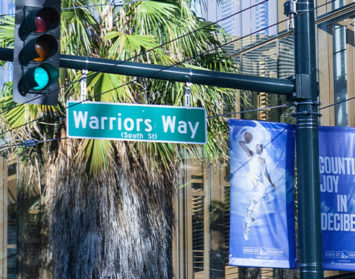Mayor Dick Murphy’s first State of the City speech in early January promised several improvements that he vowed would come to pass by 2004. As I listened to his thoughtful assessment of the problems we face and what we can expect from his administration in terms of solutions, I began thinking about what our metropolitan area might look like by that magic date — which, it so happens, is an election year.
Admittedly, what I engaged in might be characterized as little more than civic-minded daydreaming. I prefer “envisioning the positive.” Without benefit of the usual gaggle of numbers, statistics and other quantitative data that accompany most predictions, here are some of the situations I would like to see in place for San Diego by the time Mayor Murphy’s first mayoral term is over.
Traffic in downtown San Diego will be less than half that of the Sorrento Mesa area. It will take only eight minutes to drive from downtown to the Golden Triangle area. Presently, one can spend that length of time waiting at one stoplight on this and other highly congested routes. Drivers will be able to travel downtown without knocking their front wheels out of alignment because the potholes that currently litter our streets will be things of the past. Imagine that.
Downtown San Diego will be the exciting and highly engaging center of the San Diego metroplex. A completed and prosperous ballpark and other catalysts will spur residential development, which in turn will lead to a new central library, substantial retail development, and continuing interest on the part of office developers and tenants who can now hire new downtown residents. More about the relationship between downtown residences and workplaces in a minute.
East Village will become a true urban village, similar in ambience to the Soho and TriBeCa districts of Manhattan. The additional retail and office developments will make downtown a far more important shopping and employment center than it is today.
The dining and entertainment amenities available in downtown in 2004 will make San Diego truly a 24-hour city. Downtown will offer the best dining and nighttime entertainment south of Los Angeles, even more diverse and plentiful than anything in Orange County and the Inland Empire.
At least four new hotels will be built in the downtown area by 2004, attracting thousands of guests and significant transient occupancy tax revenues. Drawn to our town by the newly expanded convention center, these guests will patronize the additional retail and entertainment facilities that in turn will spur additional development which will attract more patronage. The cycle goes on and on.
Several new office buildings will be completed and on line by the magic date, giving tenants far more choices in where to lease space than exist today. These are not just glass and steel rectangles. Those buildings now on the drawing boards and slated for completion by 2004 will be architectural works of art and great additions to our city’s skyline. They also are technologically “smart” buildings, complete with all the technology advances of recent years.
Back to what I alluded to earlier about a relationship between downtown residential and employment centers, I know someone who already is purchasing a unit in one of the new downtown condominium developments now under construction and he also plans to relocate his business within walking distance. This is not someone interested in a small cubbyhole; his business requires several thousand feet of quality office space. And this individual is by no means unique. There will be plenty of downtown residents who likewise work downtown by 2004, which gives credence to my vision for less traffic congestion in the downtown of the future. All but a very few of today’s downtown workers are commuters who daily drive to and from the suburbs and, in doing so, impact the existing transportation infrastructure.
A completed trolley line connecting the San Diego State area to other metropolitan areas and the completion of the trolley line linking Balboa Park to the bay will have made downtown and central city area ingress and egress even easier and less dependent on the automobile.
More flexible working conditions and viable transportation options also will benefit downtown workers who live elsewhere. Already, the Coaster train offers North County residents who work downtown the convenient option of commuting via rail. Additional riders will be attracted to the Coaster by the fact that the newer office buildings as well as the two planned Santa Fe Place office towers are at the west end of downtown, a quick walk from the train terminal. Add the comfortable club cars in which people will ride to the quick accessibility rail commuters will have to the many new west-end office buildings and it’s easy to predict the future viability of commuting by rail. The extent to which automobile commuters convert to using rail further decreases the present traffic congestion and strain on parking facilities downtown.
If we do things right in the short term, the San Diego of 2004 will be a dream come true.
Jason Hughes is founder of Hughes Marino, an award-winning commercial real estate company with offices across the nation. A pioneer in the field of tenant representation, Jason has exclusively represented tenants and buyers for more than 30 years. Contact Jason at 1-844-662-6635 or jason@hughesmarino.com to learn more.









